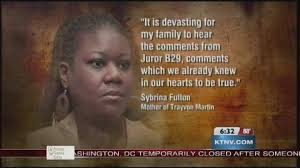On May 13 in 1536, preparations were made for the trial of Anne Boleyn and her brother George, on charges of adultery and treason. Ralph Felmingham, sergeant-of-arms, summoned twenty-seven “peers of the Queen and Lord Rochford, by whom the truth can be better made to appear” and physical preparations were begun to make the King’s Hall in The Tower of London amenable to two thousand spectators, with benches lining the walls and a high platform for the interrogator and the condemned, so that all could see. “The King was determined,” Alison Weir writes, “that justice would be seen to be done” and was sure of the judicial strength of the evidence.
Today, the notion that the Tudor court delivered “justice” in the case seems a stretch, to put it minimally. The overwhelming number of the sexual encounters of which Anne was accused not only could not be proved, but would have been virtually impossible. Moreover, the jury had been handpicked to exclude those who might be favorable to Anne and the accused men. Those who were picked were well aware of the verdict that Henry, eager for marriage to Jane Seymour, wanted. And—as Wolsey once had remarked—if the Crown wanted it, justice could be found “in a verdict that Abel was the murderer of Cain.”
Yet, as Weir goes on, “This was not to be quite the farcical trial that some historians have claimed it to be.” What gave it “the appearance” of justice was the law, which had been generously tweaked in 1534 by Thomas Cromwell so that “treason” now covered a vast range of activities, including the “wish, will or desire by words or writing” to harm the king or “deprive [him] of [his] dignity.” This extension of treason to encompass wishes and words as well as actions gave the already biased jury just the tools that they needed to turn flirtatious behavior that formerly would have been dismissed as courtly banter into proof of treachery against the king.
On the face of it, it seems absurd to compare the George Zimmerman trial to the proceedings of a Tudor court. Yet, some comparisons are deadly apt. The jury was not hand-picked to be sympathetic to Zimmerman, but they may as well have been, not so much by virtue of who they were but who they weren’t. You didn’t need the edict of a monarch to make this happen. Given the requirement of obliviousness to media or social media discussions of the case, most African-Americans, and also those with “progressive” inclinations (both most likely to have followed the case with interest) wouldn’t make the cut. And the notion that living sealed off from current events insures “neutrality” is a mistake; indeed, it may more likely insure a jury that is under-informed about a whole raft of relevant moral, social, and racial controversies. Just how equipped were they to examine this case?
It’s painfully clear, from the testimony of juror B29, that although she thought Zimmerman “got away with murder” but was hamstrung by “the law,” she was fundamentally clueless as to what the law was in this case, believing that the killing had to be “intentional” in order to qualify even as manslaughter. I think that by “intentional” she meant something like “done knowing that Trayvon Martin’s death would result.” But of course, that isn’t required for manslaughter.
Juror B37 (although married to a lawyer) was confused in a different way. The defense had not defended Zimmerman on the grounds of “crime of passion” or as a “stand your ground” case. Nonetheless, that’s how juror B37, in her interview with Anderson Cooper, explained her finding of “not guilty”:
“…[B]ecause of the heat of the moment and the stand your ground. He had a right to defend himself. If he felt threatened that his life was going to be taken away from him or he was going to have bodily harm, he had a right.”
It may (or may not be) that Juror B37 was looking for any excuse. She was amazingly upfront about her biases, as she declared Zimmerman an “overeager helper” whose heart was “in the right place” and, incredibly, felt as “sorry” for him as for Trayvon Martin. She readily admitted that she believed all the defense’s witnesses and found none of the prosecution’s credible. The baseline assumption governing her “examination” of the evidence was that Zimmerman’s account of what happened that night was accurate. She seemed to be conflating “presumption of innocence until proven guilty” with “presumption of truthfulness even when proven to be lying.” When it came to Zimmerman, that is. The testimony of key prosecution witnesses, such as Rachel Jeantel, was dismissed on the most spurious (and disgusting) of grounds—lack of “education” and “poor communication skills”—except, tellingly, when Jeantel’s testimony confirmed Zimmerman’s (Juror B-37 felt “the most important thing” in Jeantel’s testimony was the time of the phone call “coincides with George’s statements and testimony of time limits and what had happened during that time.”)
But it’s also true that although “stand your ground” played no part in the defense’s case, it was certainly there in the instructions to the jury, which included:
If George Zimmerman was not engaged in an unlawful activity and was attacked in any place where he had a right to be, he had no duty to retreat and had the right to stand his ground and meet force with force, including deadly force if he reasonably believed that it was necessary to do so to prevent death or great bodily harm to himself or another or to prevent the commission of a forcible felony.
 Apparently, at least some of the jurors felt trapped into their verdict by this instruction. But the jury instructions—I’ve read them myself, several times—were convoluted beyond belief. Clearly, the jurors had problems with the criteria for “manslaughter,” as evidenced not only by Juror B 29’s confusion but by the fact that the jury asked for clarification. When the court returned the message to them to be more specific, they did not do so, but instead returned their verdict of “not guilty” suspiciously speedily, given the fact that they obviously had unanswered questions. I believe that they were so fundamentally confused by the instructions that they were not able to formulate a more specific question.
Apparently, at least some of the jurors felt trapped into their verdict by this instruction. But the jury instructions—I’ve read them myself, several times—were convoluted beyond belief. Clearly, the jurors had problems with the criteria for “manslaughter,” as evidenced not only by Juror B 29’s confusion but by the fact that the jury asked for clarification. When the court returned the message to them to be more specific, they did not do so, but instead returned their verdict of “not guilty” suspiciously speedily, given the fact that they obviously had unanswered questions. I believe that they were so fundamentally confused by the instructions that they were not able to formulate a more specific question.
ANDERSON COOPER: Did you feel like you understood the instructions from the judge? Because they were very complex. I mean, reading them, they were tough to follow.
JUROR: Right. And that was our problem. I mean, it was just so confusing what — with what and what we could apply to what. Because I mean, there was a couple of them in there that wanted to find him guilty of something. And after hours and hours and hours of deliberating over the law and reading it over and over and over again, we decided there’s just no way — other place to go.
Of course, there was another place to go: They might have dismissed Zimmerman’s account on the basis of inconsistencies, physical impossibilities, and lack of credibility, due to his numerous lies. They might also have thought more carefully and deeply about the notions of “regard for human life,” “ill will” and “hatred” and how they might have indeed applied in the case. They might have sent the instructions back to the judge and told her: “These are an incomprehensible mess, and no one—neither prosecution nor defense nor you, judge—has clarified them for us.” They might have asked, for example, about that arcane phrase “depraved mind”—which amazingly, still appears in the criteria for murder two. It’s unlikely that a person in 2013 (who wasn’t also a lawyer) would see this description as applying to anyone except a psychopath or career criminal.
Although it wasn’t mentioned in either Juror B37 or B29’s remarks, I would be surprised if the jury was not also confused by defense lawyer Mark O’Mara, who in his concluding statements, gave the jury his own “instructions” as to how to determine reasonable doubt. It’s very simple, he said. When you get into that room, he said, just ask yourselves: “Do we think that he might have acted in self-defense?” O’Mara then scripted some possible thoughts a juror might have in considering that question: “I’m not convinced. I have some doubt, have some concern, that he just may have acted in self-defense.” And then the punchline: “Well, if you reach that conclusion, you get to stop. You really do.”
“Might have”? “Some” doubt? “Some” concern? “Just may have?”
I thought “reasonable doubt” and “beyond a shadow of a doubt” were two very different things. What about the “reason” part? Isn’t it supposed to play some role here?
Not according to the jury instructions, which specify that doubt is “reasonable” only if it is able to topple a juror’s “abiding conviction of guilt.” But to have an “abiding conviction,” unfortunately, does not necessitate the application of reason. Webster’s defines it as “a firmly held belief or opinion.” And that corresponds, pretty much, to ordinary usage. We have all come across people who are “convinced” of irrational beliefs, errors of judgment, mistakes about facts.
Convictions, to be worth anything, have to be subjected to logic, examination of physical possibility or impossibility of various narratives, credibility of the testimony on which ones convictions are based. .
The prosecution, remarkably, (and for reasons that I cannot fathom) did not choose to counter O’Mara’s torqued conception of “reasonable doubt.” And so, whatever ideas, assumptions, perceptions, biases those jurors brought with them into the deliberation process were provided a legal “hole” through they were permitted entry and authority.
 Social historians know that “the law,” even when applied correctly, does not always bring “justice” with it. It’s easy to fall in love with the word and, as in many love affairs, stop thinking. I suspect that the 1536 jury who found Anne Boleyn guilty believed that they had followed the letter of the law, and perhaps they had. For the legal definition of treason had been twisted out of shape by Cromwell, and so had the composition of the jury. They had no problem dismissing physical impossibilities, because their sympathies were bent and their “convictions” trumped logic and fact. So, too, the Zimmerman case was surely among those in which the appearance of a judicially “correct” verdict, aided and abetted not only by the skewed composition of the jury, convoluted instructions, and a politically motivated revision of the law, working in a surreptitious but deadly way —the “stand your ground” concept—trumped actual justice.
Social historians know that “the law,” even when applied correctly, does not always bring “justice” with it. It’s easy to fall in love with the word and, as in many love affairs, stop thinking. I suspect that the 1536 jury who found Anne Boleyn guilty believed that they had followed the letter of the law, and perhaps they had. For the legal definition of treason had been twisted out of shape by Cromwell, and so had the composition of the jury. They had no problem dismissing physical impossibilities, because their sympathies were bent and their “convictions” trumped logic and fact. So, too, the Zimmerman case was surely among those in which the appearance of a judicially “correct” verdict, aided and abetted not only by the skewed composition of the jury, convoluted instructions, and a politically motivated revision of the law, working in a surreptitious but deadly way —the “stand your ground” concept—trumped actual justice.
“The Law.” It’s time to stop invoking it, blaming it, or using it to excuse the verdict in the Zimmerman case. Let’s admit it simply didn’t function here (or undoubtedly in countless other cases) in any kind of coherent or effective way, and start cleaning up our act.









 Purchase The Creation of Anne Boleyn: A New Look at England's Most Notorious Queen (US)
Purchase The Creation of Anne Boleyn: A New Look at England's Most Notorious Queen (US)